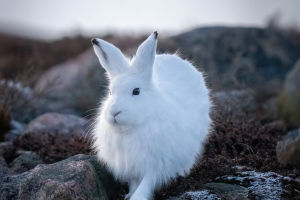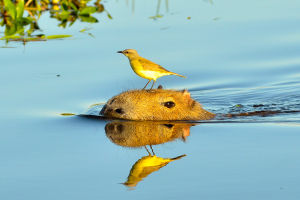Step outside into a dry, dusty desert and imagine the ground beneath your feet hiding an entire town—twisting tunnels, food storage, nurseries, and even lookout stations.
You might not see anything at first, but you're standing on top of one of nature's most structured miniature societies: a meerkat colony.
Meerkats may look like small, curious animals popping out of holes, but their daily life is anything but simple. These creatures are organizational geniuses, living in complex underground networks while sticking to strict roles—from guards to babysitters.
Let's dig into what makes their society so smart—and what we can learn from it.
1. Underground Homes With Real Architecture
Multi-room, multi-entrance, and multi-functional
A meerkat burrow isn't just a hole—it's an engineered system. Each burrow has multiple entrances, ventilation shafts, and specific rooms for sleeping, raising pups, and escaping predators. Some tunnel systems stretch over 16 feet long (5 meters) and go 6.5 feet deep (2 meters) into the ground.
Why all the effort? Because the desert sun is brutal. The temperature underground is far more stable and cooler than above ground. In fact, during the hottest hours, meerkats will retreat into the lower chambers to rest and recover.
And they don't just live in one burrow. A single group, or mob, can rotate between 10–15 burrows across their territory, kind of like vacation homes. They might use one burrow for a few days before moving on, keeping predators guessing and minimizing risk.
2. Lookouts That Never Blink
High security
Ever seen a meerkat standing tall on its back legs, tail balancing behind, scanning the sky? That's not just posing—it's one of the group's most important jobs: sentry duty.
While the rest of the mob forages for food—digging for insects, larvae, or small reptiles—at least one meerkat always stands guard. This lookout watches the skies for birds of prey like hawks or eagles and alerts the group with specific calls. If they see a problem, the call changes dramatically—like an alarm.
Here's the impressive part:
• They take turns—no one gets stuck with all the boring shifts.
• They recognize trustworthy sentries—some individuals are more reliable and the group listens more closely to them.
• They don't abandon their post—sentries stick to their job, even when food is just a few feet away.
Some researchers even describe this behavior as a form of altruism, since the sentry puts itself at greater risk to protect the rest. It's one of the clearest examples of cooperative behavior in mammals outside primates.
3. A Babysitting System That Works
One queen, many nannies
Not everyone in a meerkat group gets to have babies. Usually, only the dominant female and male reproduce. But the whole group helps raise the pups—even those who didn't give birth.
Helpers will:
• Stay behind while others forage, just to babysit
• Feed the pups pre-chewed food
• Teach them how to hunt and avoid danger
This isn't random kindness. It's part of a tight-knit social system where shared responsibility increases the pups' chances of survival—and strengthens the whole group over time.
Studies have found that mobs with more helpers tend to raise more successful pups. It's a classic case of "it takes a village."
4. Everyone Has a Job—And They Know It
Structure, routine, and cooperation
Meerkat society doesn't run on chaos. From digging new tunnels to foraging in formation, this is a group that values teamwork and routine. Every morning, they leave their burrow together, often sunbathing to warm up before heading out. Foraging is done as a unit, moving across their territory in a loose line, with sentries rotating in and out.
Even their communication system is sophisticated. They use over 30 different vocal sounds—from simple location updates to complex warning calls that distinguish between threats like ground predators or aerial ones.
Each action in the group is timed and coordinated. And if something disrupts the structure—like the loss of a dominant female—the group reorganizes quickly. New leaders step up, new alliances form, and the duties continue.
There's something incredibly inspiring about a group of animals that, despite their size and harsh environment, manages to build safe homes, delegate tasks, and care for each other without conflict.
Have you ever thought of meerkats as little "desert citizens" with jobs and routines just like ours? Which part of their underground society fascinates you most—the way they build, the way they watch over each other, or the way they raise kids as a team? Let's talk about it.


